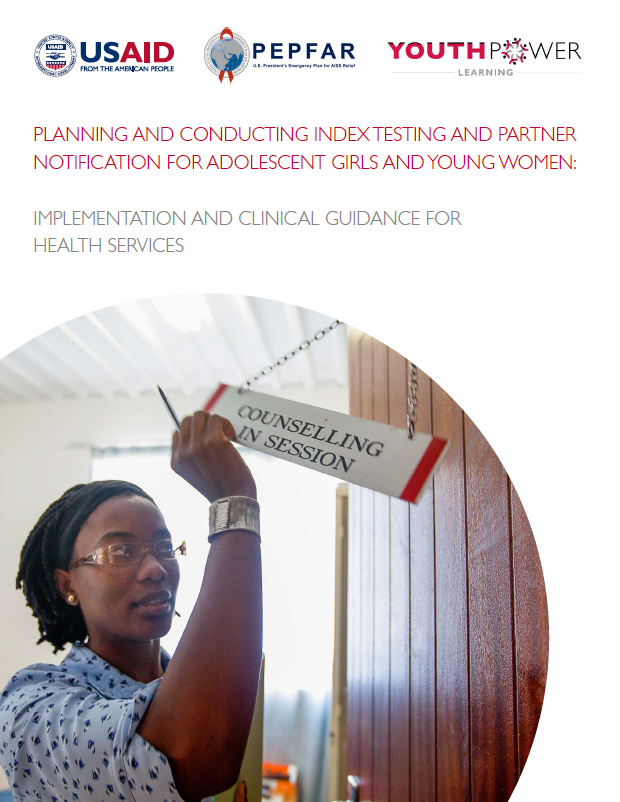 Adolescent girls and young women (AGYW) and their partners have been identified as a priority population to reach with HIV index testing to ensure early linkage to care and treatment services. Recently, partner notification (PN) linked with HIV index testing has also been recommended for AGYW in low- and middle-income countries (LMICs) to support global efforts to reach 95-95-95 goals and achieve epidemic control. AGYW between the ages of 15 and 24 carry a significantly higher risk for HIV infection than their male peers or older women and men, yet are less likely to access HIV testing or treatment.
Adolescent girls and young women (AGYW) and their partners have been identified as a priority population to reach with HIV index testing to ensure early linkage to care and treatment services. Recently, partner notification (PN) linked with HIV index testing has also been recommended for AGYW in low- and middle-income countries (LMICs) to support global efforts to reach 95-95-95 goals and achieve epidemic control. AGYW between the ages of 15 and 24 carry a significantly higher risk for HIV infection than their male peers or older women and men, yet are less likely to access HIV testing or treatment.
The risk or fear of violence can severely impact women’s, and in particular young women’s willingness to disclose their HIV status to their partners. While evidence is mixed about whether HIV disclosure in actuality results in increased IPV, the fear of violence, combined with AGYW’s already heightened risk and lower levels of power within their intimate relationships, is real enough. Providers who are interested in supporting their AGYW clients with PN, whether during index testing services or not, must also be equipped to perform IPV screening and safety checks with their clients. Providers may need support not only to address the specific needs of AGYW living with HIV, but also should be trained on how to conduct routine enquiry for IPV, including how to ask about experience or fear of sexual violence and how to respond when an AGYW discloses experience with or fear of violence. In addition, providers considering performing index testing services with young or adolescent clients, in particular with AGYW who have tested positive for HIV, should be trained in principles of providing rights-based, gender sensitive, adolescent- and youth-friendly reproductive health and family planning services.
This tool provides:
• Programmatic/service delivery considerations to be reviewed before implementing index testing services with AGYW;
• A provider job aid for index testing with AGYW, including integrated service delivery steps, scripts, and tools for documentation; and
• A toolbox with additional recommended training and guidance resources for providers working with adolescent clients.
Throughout this tool are key decision-making points or moments, designed to equip providers with guidance to determine if HIV PN is generally recommended for AGYW clients. Providers are encouraged to use their training and best judgment in addition to this tool to make a final determination about whether and how to encourage PN for their individual clients. The programmatic and service delivery considerations complement the detailed screening for individual clients in the included Job Aid for Index Testing with AGYW.
